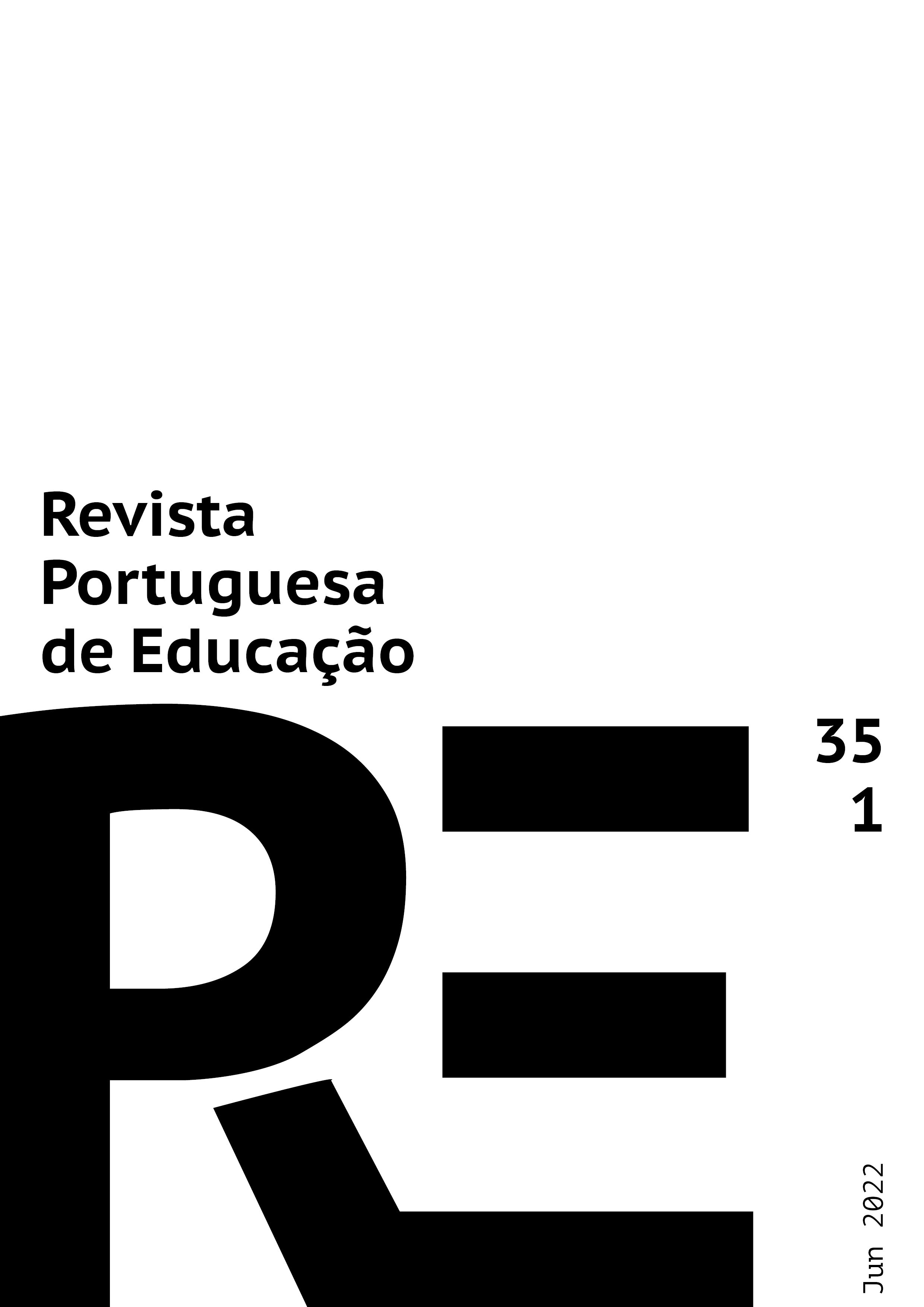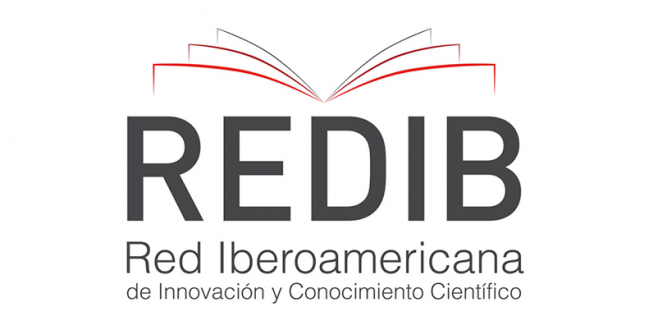Teachers’ perceptions of the impact of stuttering on the daily life of their students who stutter
DOI:
https://doi.org/10.21814/rpe.18383Palabras clave:
Stuttering, Quality of life, Teachers’ perception, School-age childrenResumen
Stuttering is a neurodevelopmental disorder involving interruptions in the flow of speech. The reactions of listeners and others in a child’s environment could affect how children perceive their stuttering. Children experience many of their everyday social situations in the school context. Because it might be hard for children who stutter to deal with communication in the school setting, it is essential to know how teachers perceive the impact of stuttering on their students. In this study, we collected data about teachers’ perceptions of the impact of stuttering on Portuguese children who stutter using an adaptation of the European Portuguese translation of Overall Assessment of the Speaker’s Experience of Stuttering (OASES-S-PT). Participants were 27 teachers and their students who stutter (n=27; mean age=9.0 mos., SD=1.8 mos.), recruited from different cities in Portugal. In general, teachers perceived the overall impact of stuttering in their students’ lives as mild-to-moderate. Our results did not reveal any statistically significant differences between the teachers’ perceptions of the impact of stuttering and the students’ self-reports. Still, there was no statistically significant correlation between the students’ impact scores and the teachers’ impact scores. Teachers were unable to rate several items on the instrument, which indicates that they were unfamiliar with some aspects of the children’s experiences with stuttering. This finding highlights the need to integrate teachers into therapy programs to increase support within the environment of for children who stutter.
Descargas
Citas
Al-Awad, A, & Sonuga-Barke, E. (2002). The application of the Conners’ Rating Scales to a Sudanese sample: An analysis of parents’ and teachers’ ratings of childhood behaviour problems. Psychology and Psychotherapy: Theory, Research and Practice, 75(2), 177–187. https://doi.org/10.1348/147608302169634
Ambrose, N. G., & Yairi, E. (1999). Normative Disfluency Data for Early Childhood Stuttering. Journal of Speech, Language, and Hearing Research, 42(4), 895–909.
Beilby, J. M., Byrnes, M. L., & Yaruss, J. S. (2012). The impact of a stuttering disorder on Western Australian children and adolescents. Perspectives on Fluency and Fluency Disorders, 22(2), 51. https://doi.org/10.1044/ffd22.2.51
Bloodstein, O., Bernstein Ratner, N. & Brundage, S. B. (2021). A Handbook on stuttering (7th ed). Plural Publishing.
Blood, G. W., Boyle, M. P., Blood, I. M., & Nalesnik, G. R. (2010). Bullying in children who stutter: Speech-language pathologists’ perceptions and intervention strategies. Journal of Fluency Disorders, 35(2), 92–109. https://doi.org/10.1016/j.jfludis.2010.03.003
Boey, R. (2012). Essentials of Epidemiology and Phenomenology of Stuttering – Consequences for Clinical SLP Practice. Logopedija, 3(1), 1–11.
Boey, R., Van de Heyning, P. H., Wuyts, F. L., Heylen, L., Stoop, R., & De Bodt, M. S. (2009). Awareness and reactions of young stuttering children aged 2–7 years old towards their speech disfluency. Journal of Communication Disorders, 42(5), 334–346. https://doi.org/10.1016/j.jcomdis.2009.03.002
Bothe, A. K., & Richardson, J. D. (2011). Statistical, Practical, Clinical, and Personal Significance: Definitions and Applications in Speech-Language Pathology. American Journal of Speech-Language Pathology, 20(3), 233–242. https://doi.org/10.1044/1058-0360(2011/10-0034)
Carroll, C. (2010). "It's not everyday that parents get a chance to talk like this": Exploring parents ’ perceptions and expectations of speech-language pathology services for children with intellectual disability. International Journal of Speech-Language Pathology, 12(4), 352–361. https://doi.org/10.3109/17549500903312107
Conture, E. G. (2001). Stuttering: Its Nature, Diagnosis, and Treatment. Allyn and Bacon.
Cooke, K., & Millard, S. (2018). The Most Important Therapy Outcomes for School-Aged Children Who Stutter: An Exploratory Study. American Journal of Speech-Language Pathology, 27(October), 1152–1163.
Craig, A., Blumgart, E., & Tran, Y. (2009). The impact of stuttering on the quality of life in adults who stutter. Journal of Fluency Disorders, 34(2), 61–71. https://doi.org/10.1016/j.jfludis.2009.05.002
Daniels, D. E., Gabel, R. M., & Hughes, S. (2012). Recounting the K-12 school experiences of adults who stutter: A qualitative analysis. Journal of Fluency Disorders, 37(2), 71–82. https://doi.org/10.1016/j.jfludis.2011.12.001
Dorsey, M., & Guenther, R. K. (2000). Attitudes of professors and students toward college students who stutter. Journal of Fluency Disorders, 25(1), 77–83. https://doi.org/10.1016/S0094-730X(99)00026-1
Firmin, M. W., Proemmel, E., & Hwang, C. (2000). A Comparison of Parent and Teacher Ratings of Children’s Behaviors. Educational Research Quarterly, 29(2), 18–28.
Guimarães, I. (2007). A ciência e a arte da voz humana. Alcabideche: Escola Superior de Saúde de Alcoitão.
Guimarães, I., & Abberton, E. (2005). Fundamental frequency in speakers of Portuguese for different voice samples. Journal of Voice, 19(4), 592–606. https://doi.org/10.1016/j.jvoice.2004.11.004
Guttormsen, L. S., Kefalianos, E., & Næss, K.-A. B. (2015). Communication attitudes in children who stutter: A meta-analytic review. Journal of Fluency Disorders, 46, 1–14. https://doi.org/10.1016/j.jfludis.2015.08.001
Harlen, W. (2005). Trusting teachers’ judgement: research evidence of the reliability and validity of teachers’ assessment used for summative purposes. Research Papers in Education, 20(3), 245–270. https://doi.org/10.1080/02671520500193744
Hayhow, R., Cray, A. M., & Enderby, P. (2002). Stammering and therapy views of people who stammer. Journal of Fluency Disorders, 27(1), 1–17. https://doi.org/10.1016/S0094-730X(01)00102-4
Howard, C. (2013). Behavioral Stuttering Interventions for Children and Adolescents: A Systematic Review and Meta-Analysis. Journal of Speech, Language, and Hearing Research, 56, 921–933. https://doi.org/10.1044/1092-4388(2012/12-0036)
Klompas, M., & Ross, E. (2004). Life experiences of people who stutter, and the perceived impact of stuttering on quality of life: Personal accounts of South African individuals. Journal of Fluency Disorders, 29(4), 275–305. https://doi.org/10.1016/j.jfludis.2004.10.001
Langevin, M., Packman, A., & Onslow, M. (2010). Parent perceptions of the impact of stuttering on their preschoolers and themselves. Journal of Communication Disorders, 43(5), 407–423. https://doi.org/10.1016/j.jcomdis.2010.05.003
Li, J., & Arnold, H. S. (2015). Reactions of teachers versus non-teachers toward people who stutter. Journal of Communication Disorders, 56, 8–18. https://doi.org/10.1016/j.jcomdis.2015.05.003
Marôco, J. (2010). Análise Estatística - Com Utilização do SPSS (3ª Ed.). Edições Sílabo.
Miller, C. (1999). Teachers and speech and language therapists: a shared framework. Nasen Journals, 26(3), 141–146. https://doi.org/10.1111/1467-8527.t01-1-00126
Moon, K. R., Chung, S. M., Park, H. S., & Kim, H. S. (2012). Materials of Acoustic Analysis: Sustained Vowel Versus Sentence. Journal of Voice, 26(5), 563–565. https://doi.org/10.1016/j.jvoice.2011.09.007
Murphy, W. P., Yaruss, J. S., & Quesal, R. W. (2007). Enhancing treatment for school-age children who stutter. I. Reducing negative reactions through desensitization and cognitive restructuring. Journal of Fluency Disorders, 32(2), 121–138. https://doi.org/10.1016/j.jfludis.2007.02.002
Pros, R. C., Tarrida, A. C., Muntada, M. C., & Martin, M. B. (2017). Horarios laborales de los progenitores y su incidencia en el rendimiento académico de alumnos de primaria. Efectos diferenciales del género. Revista Portuguesa de Educação, 30(1), 135. https://doi.org/10.21814/rpe.9512
Reardon-Reeves, N., & Yaruss, J. S. (2013). School-age stuttering therapy: A practical guide. Stuttering Therapy Resources, Inc.
Reardon- Reeves, N., & Yaruss, J.S. (2015). School-age stuttering: How teachers can help. Stuttering Therapy Resources, Inc.
Riley, G. (2009). The Stuttering Severity Instrument for Adults and Children (SSI-4) (4th ed.). PRO-ED.
Rocha, M., Rato, J. R., Yaruss, J.S. (2020). The impact of stuttering on Portuguese school-age children as measured by the OASES-S. Speech, Language and Hearing, 24(1), 38-47. https://doi.org/10.1080/2050571X.2020.1751427
Rocha, M. S., Yaruss, J. S., & Rato, J. R. (2019a). Gaguez na Criança - Atualização da Revisão de Literatura. Cadernos De Saúde, 11(2), 12-20. https://doi.org/10.34632/cadernosdesaude.2019.5950
Rocha, M. S., Yaruss J. S. & Rato, J. R. (2019b). Temperament, Executive Functioning, and Anxiety in School-Age Children Who Stutter. Frontiers in Psychology, 10. https://doi.org/10.3389/fpsyg.2019.02244
Rocha, M. S., Yaruss J. S. & Rato, J. R. (2019c). Stuttering Impact: A Shared Perception for Parents and Children? Folia Phoniatrica et Logopaedica, 72(9), 1–9. https://doi.org/10.1159/000504221
Schatz, A. M., Ballantyne, A. O., & Trauner, D. A. (2001). Sensitivity and Specificity of a Computerized Test of Attention in the Diagnosis of Attention-Deficit/Hyperactivity Disorder. Assessment, 8(4), 357–365. https://doi.org/10.1177/107319110100800401
Seixas, A. M., Matos, A., Festas, M. I., & Fernandes, P. (2014). Os Tempos na Escola: estudo comparativo da carga horária em Portugal e noutros países. Lisboa: Fundação Francisco Manuel dos Santos.
Silva, L. K., Martins-Reis, V. de O., Maciel, T. M., Ribeiro, J. K. B. C., Souza, M. A. de, & Chaves, F. G. (2016). Gagueira na escola: efeito de um programa de formação docente em gagueira. CoDAS, 28(3), 261–268. https://doi.org/10.1590/2317-1782/20162015158
Silvestre, I. (2009). Avaliação Acústico-Perceptiva e Stress em Mulheres com Patologia Laríngea Inês dos Reis Silvestre Avaliação Acústico-Perceptiva e Stress em Mulheres com Patologia Laríngea. Universidade de Aveiro.
Smith, A., & Weber, C. (2017). How Stuttering Develops: The Multifactorial Dynamic Pathways Theory. Journal of Speech Language and Hearing Research, 60(9), 2483–2505. https://doi.org/10.1044/2017_JSLHR-S-16-0343
Tichenor, S., & Yaruss, J.S. (2019). Stuttering as defined by adults who stutter. Journal of Speech, Language, and Hearing Research, 62(12), 4356-4369. https://doi.org/10.1044/2019_JSLHR-19-00137
Turnbull, J. (2006). Promoting greater understanding in peers of children who stammer. Emotional and Behavioural Difficulties, 11(4), 237–247. https://doi.org/10.1080/13632750601022139
Ulloa, R. E., Narváez, M. R., Arroyo, E., del Bosque, J., & de la Peña, F. (2009). Estudio de validez del cuestionario para trastorno por déficit de atención y trastorno de conducta. Actas Espanolas de Psiquiatria, 37(3), 153–157.
Yaruss, J. S., Coleman, C. E., & Quesal, R. W. (2012). Stuttering in School-Age Children: A Comprehensive Approach to Treatment. Language, Speech, and Hearing Services in Schools, 43(4), 536–548. https://doi.org/10.1044/0161-1461(2012/11-0044)
Yaruss, J. S., & Quesal, R. W. (2004). Stuttering and the International Classification of Functioning, Disability, and Health (ICF): An update. Journal of Communication Disorders, 37(1), 35–52. https://doi.org/10.1016/S0021-9924(03)00052-2
Yaruss, J. S., & Quesal, R. W. (2006). Overall Assessment of the Speaker’s Experience of Stuttering (OASES): Documenting multiple outcomes in stuttering treatment. Journal of Fluency Disorders, 31(2), 90–115. https://doi.org/10.1016/j.jfludis.2006.02.002
Yaruss, J. S., & Quesal, R. W. (2016). Overall Assessment of the Speaker’s Experience of Stuttering (OASES). McKinney, TX: Stuttering Therapy Resources, Inc.
Descargas
Publicado
Cómo citar
Número
Sección
Licencia
Derechos de autor 2022 Portuguese Journal of Education

Esta obra está bajo una licencia internacional Creative Commons Atribución-CompartirIgual 4.0.
1. Los autores y autoras conservan los derechos de autor y conceden a la revista el derecho de la primera publicación, con el trabajo simultáneamente disponible bajo la Licencia Creative Commons Attribution que permite compartir el trabajo con el reconocimiento de la autoría y publicación inicial en esta revista.
2. Los autores y autoras pueden asumir contratos adicionales separadamente para la distribución no exclusiva de la versión del trabajo publicada en esta revista (por ejemplo, depositar en un repositorio institucional o como capítulo de libro), con el reconocimiento de la autoría y publicación inicial en esta revista.
3. Los autores y autoras están autorizados y son incitados/as a publicar y compartir su trabajo en línea (por ejemplo, en repositorios institucionales o páginas personales) antes o durante el proceso editorial, pues puede dar lugar a modificaciones productivas o aumentar el impacto y las citas del trabajo publicado (Véase El Efecto del Acceso Libre).
Esta obra está disponible bajo la Licencia Creative Commons Atribución-CompartirIgual 4.0.




















